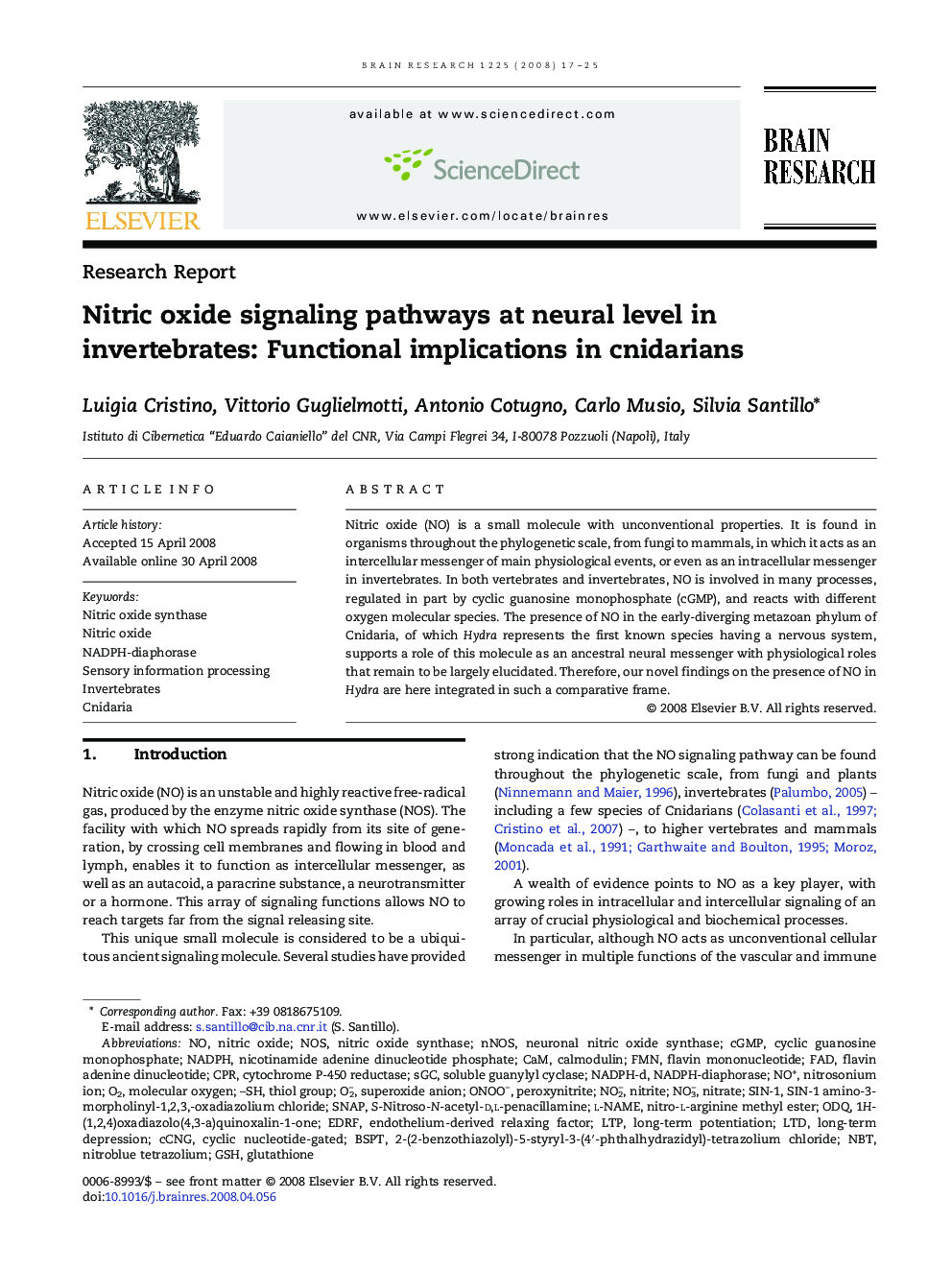| Article ID | Journal | Published Year | Pages | File Type |
|---|---|---|---|---|
| 4329446 | Brain Research | 2008 | 9 Pages |
Abstract
Nitric oxide (NO) is a small molecule with unconventional properties. It is found in organisms throughout the phylogenetic scale, from fungi to mammals, in which it acts as an intercellular messenger of main physiological events, or even as an intracellular messenger in invertebrates. In both vertebrates and invertebrates, NO is involved in many processes, regulated in part by cyclic guanosine monophosphate (cGMP), and reacts with different oxygen molecular species. The presence of NO in the early-diverging metazoan phylum of Cnidaria, of which Hydra represents the first known species having a nervous system, supports a role of this molecule as an ancestral neural messenger with physiological roles that remain to be largely elucidated. Therefore, our novel findings on the presence of NO in Hydra are here integrated in such a comparative frame.
Keywords
ODQSGCNADPH-diaphoraseNADPH-dnNOSSIN-1CnidariaEDRFNOSNBT–SHcGMPGSHNADPHcytochrome p-450 reductaseflavin adenine dinucleotideFMNl-NAMENO+NO2−NO3−O2−ONOO−nitroblue tetrazoliumsuperoxide anionCPRlong-term depressionMolecular oxygenFADInvertebrateslong-term potentiationLTPSoluble guanylyl cyclaseCAMneuronal nitric oxide synthaseSNAPendothelium-derived relaxing factorflavin mononucleotideLTDcyclic guanosine monophosphatecyclic nucleotide-gatedNitratenitro-l-arginine methyl esterNitriteNitric oxidenitric oxide synthasenicotinamide adenine dinucleotide phosphateSensory information processingPeroxynitriteCalmodulinThiol groupGlutathioneNitrosonium ion
Related Topics
Life Sciences
Neuroscience
Neuroscience (General)
Authors
Luigia Cristino, Vittorio Guglielmotti, Antonio Cotugno, Carlo Musio, Silvia Santillo,
